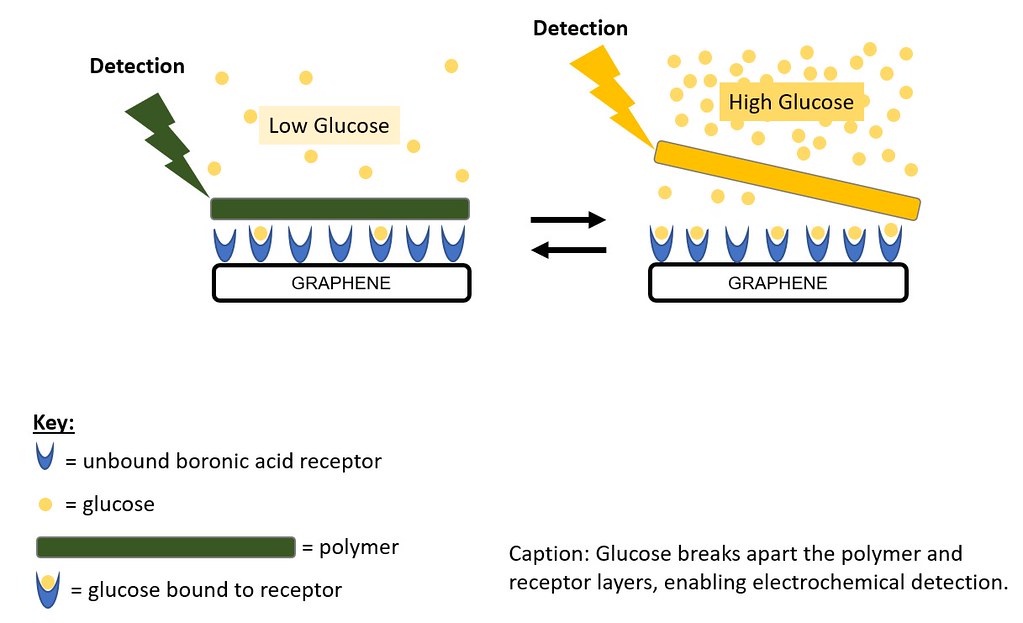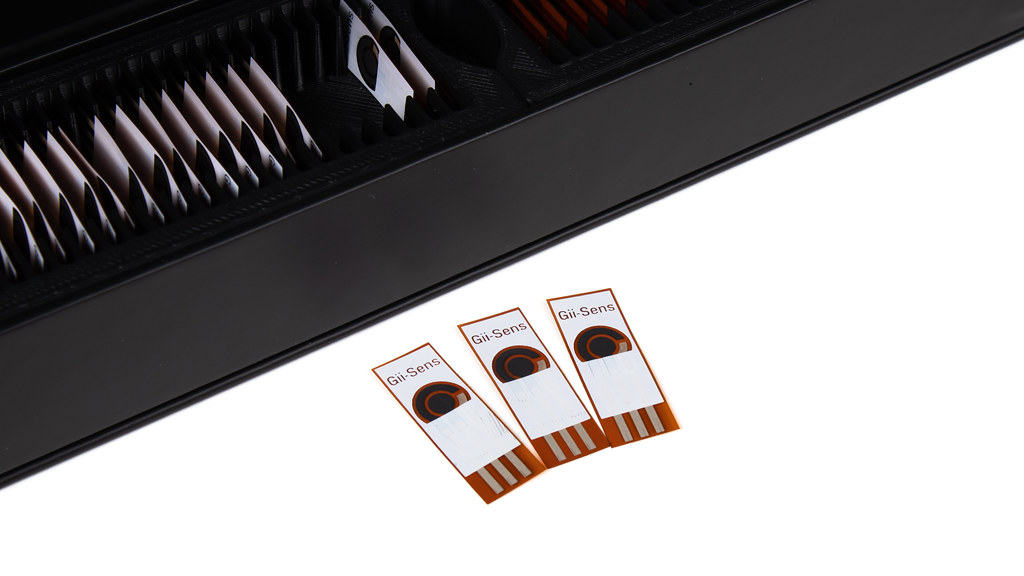Researchers at the University of Bath working in collaboration with industrial partner, Integrated Graphene, have developed a new sensing technique based on graphene foam for the detection of glucose levels in the blood. Since it is a chemical sensor instead of being enzyme-based, the new technology is robust, has a long shelf-life and can be tuned to detect lower glucose concentrations than current systems.
Diabetes affects around 4.9 million people in the UK and is a chronic condition where the patient cannot naturally regulate their blood sugar levels. Therefore, patient must measure their blood sugar levels several times a day as part of managing their condition.
Many current biosensors use enzymes that bind glucose and produce an electric current proportional to the concentration of glucose in the blood sample.
The new technique developed by scientists at Bath and Integrated Graphene uses a chemical sensor, which is more robust and is not affected by high temperatures or changes in pH. Furthermore, it has the potential to accurately detect a wider range of glucose concentrations above and below current biosensor ranges, which may be useful in neonatal glucose sensing.
The new sensor is based on the chemical boronic acid, which is attached to a graphene foam surface. An electroactive polymer layer is added on top and binds to the boronic acid. When glucose is present, it competitively binds to the boronic acid, displacing the polymer.
The sensor produces an electric current proportional to how much polymer is displaced, meaning that the concentration of glucose in the sample can be accurately measured.

The researchers anticipate the sensor will expand the scope of boronic acid - based glucose sensing, citing the recent Eversense CGM from Sensonics as an example. However, unlike Eversense, their sensor is based upon electrochemical methods rather than fluorescence, thereby enabling new boronic acid – based glucose sensing approaches.
Simon Wikeley, who is working on the sensor as part of his Chemistry PhD at the University of Bath, said: “Many current glucose sensing methods rely on biological components such as enzymes, meaning they can be sensitive to temperature and pH changes, which may affect accuracy and reliability’.
“We hope that in the future we might be able to apply our glucose detection method to exciting new technologies, such as wearable or implantable glucose monitoring systems, similar to that used in the Eversense sensor.
“Our system is chemical-based and therefore is robust and reliable. The graphene foam electrode has a high surface area to interact with the blood sample, while the polymer can act as a molecular sieve, filtering out larger molecules in the blood that could interfere with the glucose sensing.
“This sensor has proven to be reusable, which is the first step towards realising a continuous monitoring system.
“Interestingly, this same sensing technique may also be applied to a wide range of other targets, such as lactic acid. This is due to the versatile nature of the boronic acid receptor and gives us a general strategy for a variety of sensing applications. “
Professor Tony James, who is a Royal Society Wolfson Research Merit Award holder at the University of Bath’s Department of Chemistry and helped supervise the project, said: “We’re excited by our results as this is the first time this approach has been used for glucose sensing.
“We are still in the early stages of optimising sensitivity and reproducibility but hope this new technology could be used in a wide range of applications, from medical sensing to food production.
“It could also be adapted to sense other molecules or for use in continuous flow systems.”
Dr Marco Caffio, Co-Founder and CSO of Integrated Graphene, said: “When we started Integrated Graphene, one of the things that initially excited us was the plethora of sensing solutions we would be able to develop and ameliorate on the incumbent method by utilising the extraordinary sensing capabilities of our 3D graphene foam.
“Now, with this project alongside the University of Bath, we are beginning to see some of that potential being realised to create a more cost-effective and therefore accessible platform by using a new, enzyme-free glucose monitoring sensor solution.
“Now that we have proved this technique, it opens up the opportunity to take the underlying applied methodology to a vast range of similar point-of-care diagnostics that could profit from associated benefits such as reduced cost and enhanced shelf-life.
“Furthermore, the identified opportunities for means of enhancing the analytical methodology provides sufficient desirability to enhance the platform even more.”
The research was supported by the EPSRC and Integrated Graphene and is published in the scientific journal Analyst (DOI: 10.1039/D1AN01991K).

